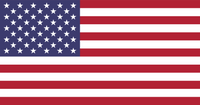Emergency Water Storage
Why consider emergency water storage? Most of us in the United States take for granted our readily available supply of safe water. Whether from a well, municipal or community supply, we expect clear, clean, non-odorous and pure water to gush forth every time we turn on the faucet; and it normally does. But our plentiful supply can be disrupted by dramatic natural phenomena such as hurricanes, flooding, wildfires, or earthquakes; or by a mundane occurrence such as a broken water main. These unavoidable disruptions in water make it necessary for emergency water storage in our
WHY STORE EMERGENCY WATER
About 20 years ago, a nearby friend called one morning and asked, “Do you have clear water? Ours is muddy.” …. I did. We lived only 1⁄4 mile apart and were served by the same municipal water company. (He later learned that a water line to his small neighborhood was being worked on.) We both rounded up containers and he came to my house to get water from my still clear-running tap. Later that day his water was completely shut off and remained off for another day.
Since then I’ve had an emergency water storage.
Granted, unlike back then, bottled water is readily available from grocery stores, convenience stores, and vending machines. But what if the disruption is longer than a few days and affects a much larger populace that may exhaust stores supplies? Storing water is an emergency essential.
HOW MUCH WATER TO STORE
The general recommendation is that each person needs 1 gallon of water per day: 2 quarts for drinking, and 2 quarts for cooking and hygiene. It was usually recommended that a 3 day supply be stored. After the New Orleans disaster
Also to be considered is how much appropriate storage space you may have available.
*(Increased amounts are necessary during hot weather or extraordinary physical activity. Also include 1 quart per day for each dog or cat in your household.)
HOW TO STORE EMERGENCY WATER
The easiest way to have water on hand for emergency use is to purchase a sufficient quantity of bottled water from a store. If, for whatever reason, you choose the do-it-yourself approach, please read on.
EMERGENCY WATER STORAGE CONTAINERS TO USE
Any food grade glass or plastic containers that previously held water, soda, or juice and that have screw-on, tight fitting lids. New commercial glass or plastic containers labeled as safe for food or beverages. These may be available in the household departments of grocery stores, department stores and discount stores, or from wholesalers that supply the food and beverage industries.
EMERGENCY WATER STORAGE CONTAINERS NOT TO USE
- Do not ever use plastic milk bottles for emergency water storage. It is difficult to remove proteins and fats that may promote bacteria growth.
- Do not use chlorine bleach bottles. These bottles contain an antistatic agent that may leach into the water over time.
- Do not use old glass containers that may have been made with glass that contains lead.
- Do not use any container that previously held toxic substances.
PREPARING THE CONTAINERS FOR EMERGENCY PREPAREDNESS
Wash both new and previously used containers and lids in hot water with a dishwashing detergent. Rinse the containers and lids with hot water.
OBTAINING AND TREATING THE WATER
If you get your water from a municipal or community water system, it should be safe to store directly from the tap with no additional treatment. An added precaution however, is to add a small amount of plain, un-scented chlorine (5.25 % sodium hypo-chlorite) bleach. Recommendations on the amount of bleach to use vary from 2 to 4 drops per quart of water. When the water/bleach mixture is shaken, a slight chlorine odor should be detectable
If you get your water from a well, cistern, spring or private source it may be fine for immediate consumption, but may harbor contaminants that make it unsafe for long-term storage. In this case, it is recommended that you purchase bottled water.
WHERE TO STORE EMERGENCY WATER
Plastic water containers should be stored in a cool area away from direct sunlight. Most plastics degrade over time; heat and sunlight will accelerate the degradation. They should not be stored near any hydrocarbons (gasoline, kerosene, diesel fuel, pesticides, etc.) because hydrocarbon vapors can penetrate polyethylene plastics.
Glass water containers don’t have the above limitations, but are subject to breakage. So it’s probably a good idea to store them in an out-the-way location.
If you have the space, a freezer is also a good place to store your plastic water containers. Just leave a few inches of air space to allow for the ice expansion. I store a few 46 oz.
HOW LONG CAN WATER BE SAFELY STORED
Properly treated water stored in properly cleaned containers should be able to be stored indefinitely. Water stored for long periods may taste flat. But taste may be improved by introducing air by dumping the water from one container to another. There are, however, recommendations that for the best tasting water, it should be stored for no longer than 5 to 12 months. This may be especially applicable if plastic containers are used.
Being a connoisseur of fine wine, I buy Chianti in glass gallon jugs, which I then use for my water storage. Each gallon of water is treated with 8 drops of bleach and stored in my basement under one of the workbenches. I used to recycle the water every year in the summer by using it to water my garden. Then I went to a two year cycle. Now I’m on an extended year cycle they were last refilled 5 1⁄2 years ago and the water still tastes fine.
CONCLUSION
Even with the knowledge that drinking water is more important than food to the
Source: Emergency Water Storage by Kerry Jelovick - Self Reliance Illustrated- Issue No. 7, March/April 2012 – Edited by The Pathfinder Store



